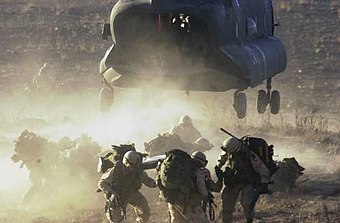

Operation Anaconda was the first military operation in Afghanistan consisting of a large number of US troops in direct combat operations.
The Shahi Kot valley in eastern Afghanistan was where the operation took place. The area was thought to be the hiding place of Taliban and al-Qaeda forces that had escaped from the Battle of Tora Bora, only a few months prior. US Military intelligence thought that these forces were wintering in the area and small in number, only around 200 fighters, with possibly some High Value Targets (HVTs) mixed in. The area was a brutal mountain landscape featuring imposing mountains and valleys that were easily defendable. The Mujahideen defeated the Soviets twice there during the Soviet-Afghan war in the 1980’s.
The American component of 1,700 troops was drawn from primarily from 187Th Infantry, 101st Airborne and 1-87Th Infantry Regiment, 10th Mountain Division. Members from 3rd and 5th Special Forces Group, Delta Force, Navy SEAL DEVGRU, 160th SOAR, Air Force CCTs and other small contingents comprised the rest of the American Component. Multiple nations from NATO contributed forces as well. These included conventional and Special Operations Forces (SOF) from Canada, UK, Germany, Norway, Australia and Netherlands. 1,000 Pro government Afghan militia members would be a part of the operation as well.
The objective of the operation was to clear out the Taliban/al-Qaeda fighters from north to south, funneling retreating fighters in blocking positions. these positions would prevent them from escaping without incurring casualties or being out right destroyed.
The Operation would begin on 1 March 2002 with SOF units conducting observation operations. The following day the rest of the component forces would insert into the area. American and coalition forces would encounter unexpected resistance upon entering the area. Instead of the estimated 200 fighters in the area there were between 750-1,000. Poor communication and other issues would lead the American forces in the north to be fired upon by friendly aircraft killing American service members and some Afghan militia. In the south American and coalition forces would encounter fierce and unexpected resistance as well but would secure their objectives by the end of the day, not without suffering multiple casualties though.
During the next several days Coalition forces would continue a grueling fight in the area, with major fighting ending on 10 March. By 18 March, 72 service members would be wounded and 8 killed. 23 Taliban/al-Qaeda fighters would be confirmed killed and the US would estimate between 200-800 enemy casualties in total. This number is contested as there where only those 23 bodies were found and Afghan militia commanders favored a lower estimate of casualties.
Overall the operation met its goal of pushing the Taliban out of the valley while inflicting heavy casualties. It was met with criticism quickly though as service members between different countries would fight offer who’s fault if was that is wasn’t as successful as it should have been. It was also met with criticism that it became driven by media obsession, rather than military goals after the first few days.
During the operation Canadian snipers would set the record for longest confirmed kill shot at 2,310 meters. This shot was beat only a few days later by another Canadian at a distance of 2,430 meters. This record shot would stand as the longest until 2017, when ANOTHER service member from the Great White North would have a confirmed kill at 3,540 meters. History continues to prove that you don’t mess with a angry Canadian, they start replacing “eh” with bullets quickly.
